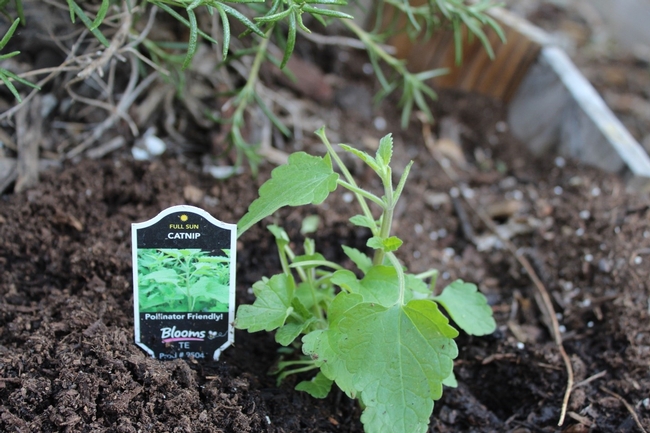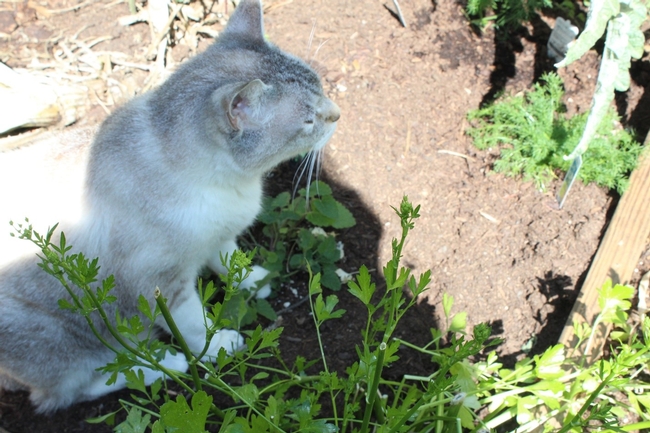UC Gardening Blogs
Bravo to Vernard Lewis and Margaret Collins: Two Legendary Entomologists
Congratulations to emeritus Cooperative Extension specialist Vernard Lewis of UC...
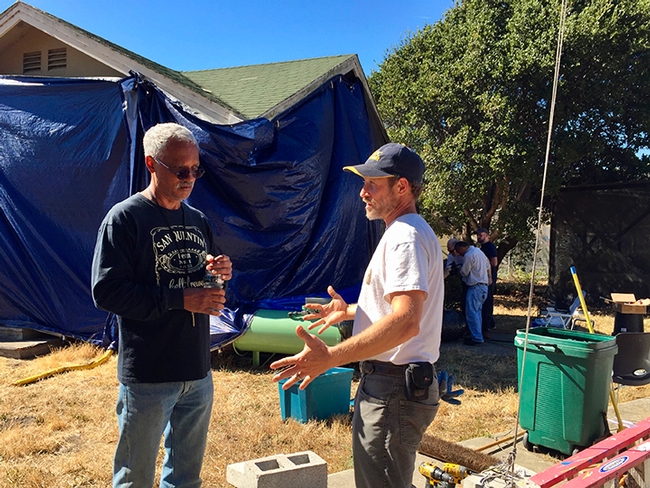
In this image, taken in October 2018, consultant and mentor Vernard Lewis (left), confers with Andrew Sutherland, UC integrated pest management advisor for Bay Area counties, about the Villa Termiti at the UC Berkeley Field Station. Sutherland, who holds a doctorate in entomology from UC Davis, was recently awarded state funding to remodel the Villa for future training of pest management professionals in the state. (UC ANR Photo by Pam Kan-Rice)
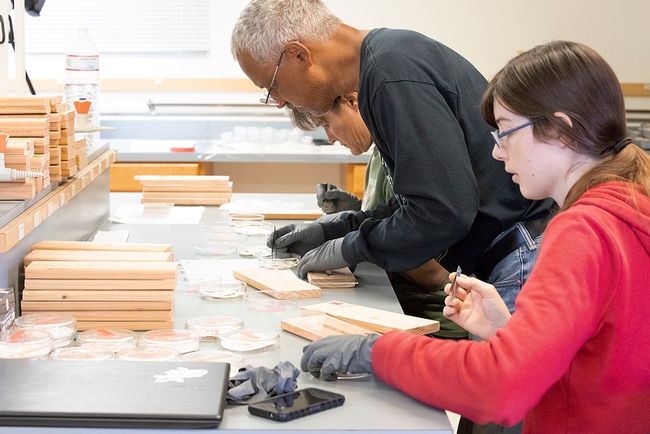
In this 2018 image, entomologist Vernard Lewis shows staff research associates how to insert termites into wood blocks. The project involved placing the wood blocks in a house to see if heat and wintergreen oil will kill termites. In front is Casey Hubble of UC Cooperative Extension, Contra Costa County, and in back is Kathleen Campbell of UC Riverside. (UC ANR Photo by Evett Kilmartin)
Healing the Earth by Healing the Soil
Humans have been stripping mother earth of her verdant, life supporting cloak for a long time, but...
UC Davis Community Ecologist Involved in Tribute to Two Female Botanists
Botanists Beverly Rathcke (1945-2011) and Jeanne Baret would have...
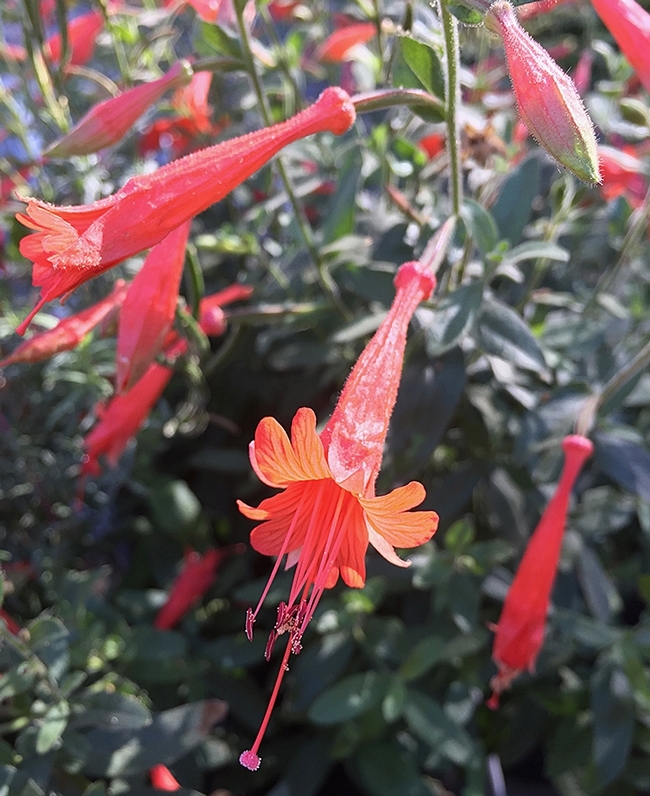
This is the California fuchsia, Epilobium canum, from the UC Davis Arboretum and Public Garden. UC Davis community ecologist Rachel Vannette isolated a new species of bacteria from this plant. (Photo by Rachel Vannette)
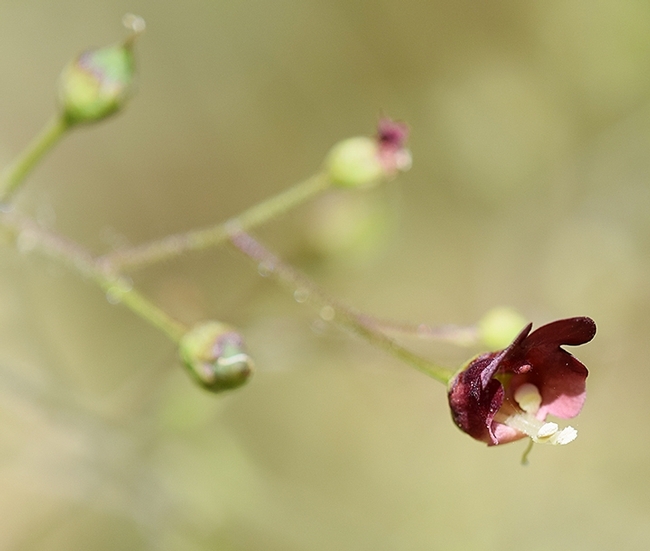
This is the California figwort or California bee plant, Scrophularia californica, from the Stebbens Cold Canyon Reserve. UC Davis community ecologist isolated a new bacteria from this plant. (Photo by Rachel Vannette)
Catnip and Mosquitoes
To those of you who own cats, you are probably familiar with catnip Nepeta cataria, a common herb related to mint. Cats just go crazy over it. My cat is no exception, he rolls it, he rubs against it and he even eats it. The active ingredientnepetalactone triggers the TRPA1 (transient receptor potentialankyrin 1) sensor in the cat. This sensor is common in animals and reacts to irritants such as mustard gas,wasabi cold or heat can which can cause a person to cough or tear up. But in cats, it makes them super happy.
To each animal, there is a different reaction to catnip. Give catnip to a human there are no euphoric feelings or irritation. However, in another animal, the mosquito has a different reaction to nepetalactone. It repels them, it's an irritant, and they just don't like it. Marco Gallio, an associate professor of neurobiology in the Weinberg College of Arts and Sciences, states “We now think catnip is so averse to so many insect species because it activates this widespread irritant receptor. Gallio confirmed his conclusion by testing mosquitoes on blood meal nylon sock doused in catnip and had volunteers put their hands with and without catnip in a mosquito-filled cage.
Could catnip be a cheaper more effective mosquito repellent than the popular DEET (N.N Diethyl-meta-toluamide) synthetic insect repellent? Gallio and his research team believe catnip has this potential. Marcus C. Stensmyr, a colleague of Gallio, writes: “Plant-derived compounds represent a new approach to developing insect repellents, as plants have known how to protect themselves from insect pests.”
Gallio adds that plant-derived repellents are often cheaper and easy to obtain. “Catnip's accessibility could have major implications in developing countries where mosquito-borne diseases are a huge problem.”
So, grow your own mosquito repellent and keep your cat happy at the same time.
References:
Could catnip become the new DEET? Lilla Reynolds , March 04,2021 Northwester Now https://news.northwestern.edu/stories2021/03/catnip-insect-repellant/
Catnip as a Mosquito Repellant: Does it Work? https://mosquitoreviews.com/repellants/catnip/
How catnip repels pesky mosquitoes, Erin Garcia de Jesus, March 27, 2021 Science News, pg. 9 www.sciencenews.org
Vegetable Gardening During Drought
As we enter another summer of drought, conserving water is essential. Luckily, there are a...




